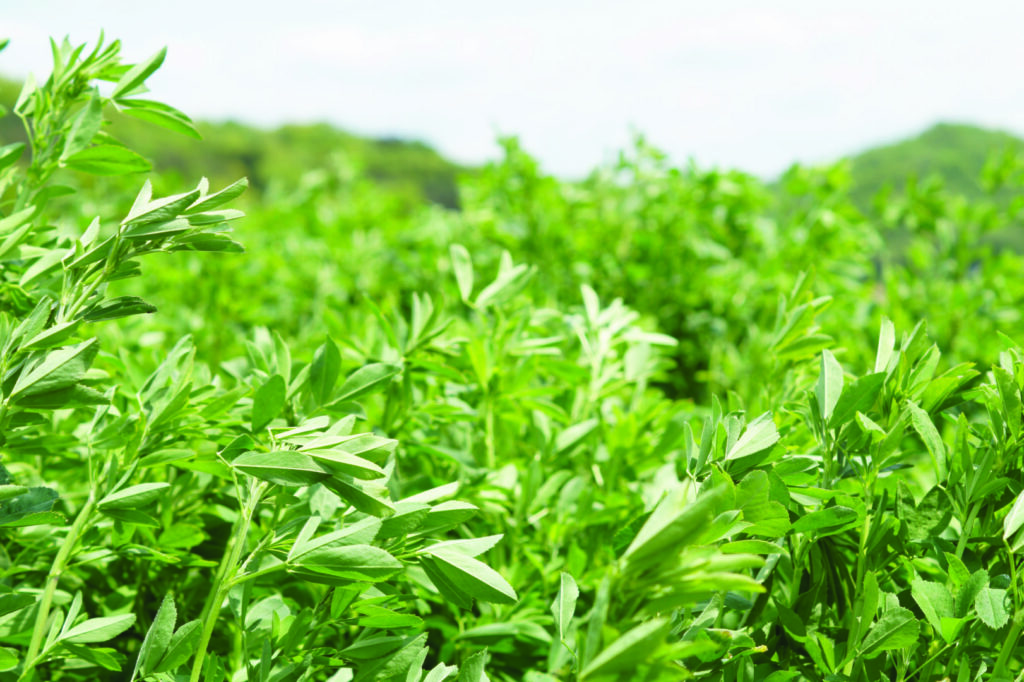The most important question you need to ask yourself if you are interested in planting alfalfa this fall is the following: What do I want to obtain from this alfalfa? Answering that question leads us to these case scenarios:
Seeding alfalfa as a forage crop in new fields
The most important decision when establishing a new alfalfa field is variety selection. A good variety not only guarantees better yield and forage quality but it also helps with crop establishment and crop management. A more complete technical review for seeding new alfalfa fields will be covered in the article “Establishing New Alfalfa Fields – Your Technical Checklist” in a future edition of From the Ground Up.
Seeding alfalfa after alfalfa
Because of alfalfa’s autotoxicity properties, seeding alfalfa after alfalfa can be risky. Studies recommend waiting at least three to five weeks between elimination of the old alfalfa crop and establishment of the new one. Tillage seems to help new alfalfa by breaking down residue and the toxins affecting new alfalfa establishment. Rainfall and soil biology also affect the success of reestablishing alfalfa. Rainfall helps wash out the autotoxic compounds and microorganisms that help degrade the toxins.
Re-seeding alfalfa to fix poor stands
Any grower with a current alfalfa field should plan on making a field/crop assessment this fall, ideally after the final harvest of the season. A final assessment should be done to determine any liming, nutrient or reseeding needs. Alfalfa is a crop that naturally tends to lessen its density over time because alfalfa doesn’t reseed itself. Planting more alfalfa into current alfalfa fields is not recommended since alfalfa has autotoxicity characteristics. A good population/density is about 35 well-growing stems per square foot. If population density is very low then a grower could consider planting a new field or interseeding with other species/grasses to improve the current crop.
Seeding alfalfa as a cover crop
YES, alfalfa can be used as a good cover crop between main crops! If used as a cover crop, you need to take into account that alfalfa is a great soil builder, a good source of N, an effective subsoiler and an erosion preventer. However, alfalfa is neither a very good N scavenger, nor is it a competitor against weeds. If used as a cover crop the time of planting is key (August to early September is ideal). You also need to take into account variety selection. Non-dormant varieties would be better for this purpose since they do not survive winters. Otherwise you will need to schedule and budget tillage (multiple passes) or herbicide applications to kill your alfalfa cover crop during the spring.

